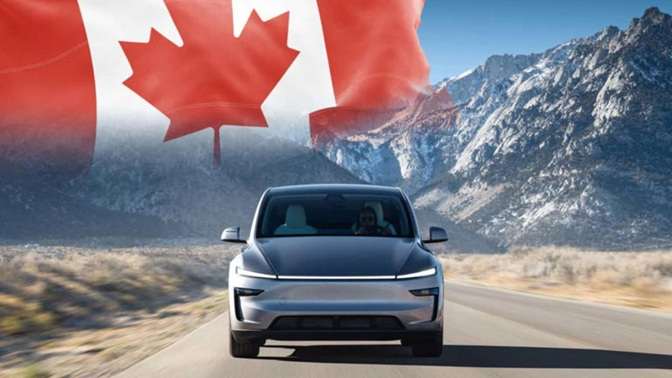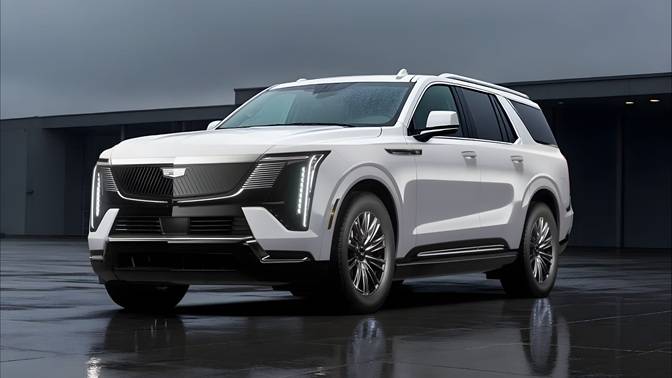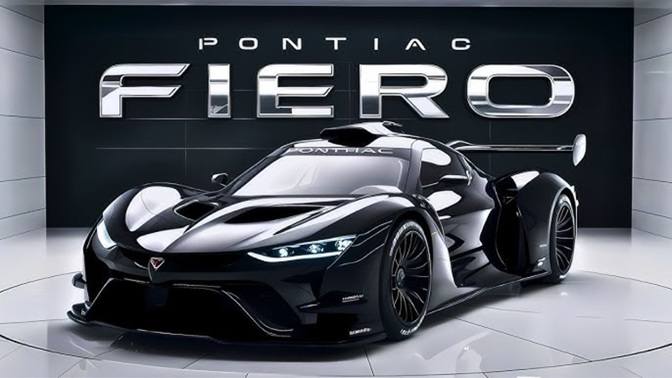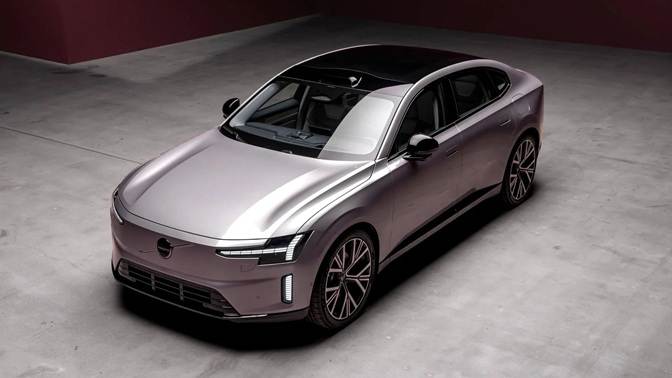The North American electric vehicle (EV) market is facing a major shakeup. In response to U.S. President Donald Trump’s newly imposed tariffs on Canadian and Mexican imports, Canada has fired back with its own aggressive countermeasures. These new tariffs, which include a 25% duty on U.S.-built cars and trucks, are set to impact consumers and automakers alike, driving up costs and reshaping the future of the industry.

The $155 Billion Counterstrike
Canada’s response to Trump’s trade policies came swiftly and decisively. Over the weekend, the Canadian government announced a $155 billion tariff package, aimed at protecting the nation’s economy and industries.
“These countermeasures have one goal: to protect and defend Canada’s interests, consumers, workers, and businesses,” officials stated.
The tariffs, which take effect on Tuesday, will apply to a broad range of U.S. imports, including:
- Passenger vehicles and trucks (including electric vehicles)
- Steel and aluminum products
- Aerospace equipment
- Agricultural products like beef, pork, dairy, and vegetables
- Recreational vehicles and boats
With billions of dollars of auto parts and vehicles crossing the U.S.-Canada border every week, these new measures are creating massive uncertainty for automakers and consumers.
A Major Blow to the Auto Industry
Automakers are now caught in a complex trade war, trying to navigate rising costs and potential supply chain disruptions. The Canadian government emphasized that the auto sector will be among the hardest hit.
Prime Minister Justin Trudeau expressed his concerns, stating:
“As I have consistently said, tariffs against Canada will put your jobs at risk, potentially shutting down American auto assembly plants and other manufacturing facilities. Unfortunately, the actions taken today by the White House split us apart instead of bringing us together.”
The 25% tariff will impact numerous American-made vehicles, including some of the most popular electric and gas-powered models. Cars and trucks built in the U.S. and imported into Canada will now carry a much higher price tag. Among the vehicles facing these increased costs are:
- Acura ZDX
- Cadillac Lyriq
- Chevrolet Silverado EV
- Ford F-150 Lightning
- Hyundai Ioniq 5
- Kia EV6 and EV9
- Lucid Air & Gravity SUV
- Mercedes-Benz EQS
- Rivian R1T & R1S
- Volkswagen ID.4
- All Tesla models built in the U.S.
One of the biggest casualties is General Motors (GM), which relies heavily on cross-border manufacturing. Many of GM’s most profitable trucks and SUVs depend on parts and assembly plants in Canada, making it one of the hardest-hit automakers.
Trump’s Tariff War: Who Pays the Price?
Trump’s newly announced tariffs aren’t limited to Canada. Mexico and China are also in the crosshairs:
- Canada & Mexico: 25% tariffs on imports
- China: An additional 10% tariff on goods, alongside an existing 100% tariff on EV-related imports
Trudeau made good on his threats to retaliate, warning the U.S. that Canada would not stand by idly.
“We are prepared to do whatever it takes to protect our industries and our economy,” said Trudeau.
The political tension surrounding this trade war is also impacting individual companies.
Canadian leadership candidate Chrystia Freeland has even suggested targeting Tesla specifically. Why? Because Tesla’s CEO Elon Musk has been a vocal supporter of Trump and his policies. Some believe Tesla could face even harsher penalties, given Musk’s growing influence in government affairs.
With both the U.S. and Canada imposing steep tariffs, car prices are expected to rise significantly. Automakers may absorb some of these costs initially, but ultimately, consumers will be the ones to pay the price.
If you’re planning to buy a new car—especially an electric vehicle—you could soon be paying thousands more.
The Uncertain Future of the Auto Industry
This trade battle has thrown the entire North American auto industry into chaos. Automakers have spent decades developing a seamless, cross-border supply chain, where cars are assembled in one country with parts from another.
With these new tariffs, this system is now under threat, forcing manufacturers to rethink production strategies. Some companies may consider moving factories or sourcing parts elsewhere to avoid the tariffs, but that will take time and investment.
At this point, there’s no easy solution. The only way to avoid higher prices is if the tariffs are rolled back—but neither the U.S. nor Canada seems willing to back down.
Consumers, automakers, and industry experts all agree on one thing: This trade war will change the future of the North American auto industry—and not for the better. What do you think? Will these tariffs force automakers to shift production, or will the cost simply fall on consumers?
PEOPLE WHO READ THIS, ALSO READ




